Top 10 Interesting Facts about Crazy Horse
In the Sioux rebellion against European Americans' invasion of the northern Great Plains, Crazy Horse, also known as Ta-Sunko-Witko, was a skilled tactician ... read more...and a fierce fighter. He was a Lakota Oglala leader who helped General George Armstrong Custer lose the Battle of the Little Bighorn by defending Oglala territory. “We preferred our way of life”, according to Crazy Horse. "We didn't cost the government anything. All we wished for was solitude and tranquility. Get to know the Lakota war leader better.” So, to help you have more useful information, let’s explore the most interesting facts about Crazy Horse below!
-
First and foremost, one of the most interesting facts about Crazy Horse is Crazy Horse was not his origin name. The son of an Oglala Sioux shaman by the same name and his Brule Sioux bride, Crazy Horse was born in the Black Hills of South Dakota in 1841.
Compared to other members of his tribe, Crazy Horse had hair with extraordinary curls and a lighter complexion. Crazy Horse was referred to as "Curly Hair" and "Light-Haired Boy" as a child since, historically, boys were not given names until they had an experience that warranted it.
After a battle with Arapaho warriors in 1858, Crazy Horse was given his father's name while his father adopted the moniker Worm. As a child, Crazy Horse was known as "His Horse Looking," but he was more generally called "Curly."
The original name of Crazy Horse was Cha-O-Ha, or Among the Trees. When Cha-O-Ha was of age, he was given the name Crazy Horse (Ta-Sunko-Witko), which had previously been used by his father and grandfather.
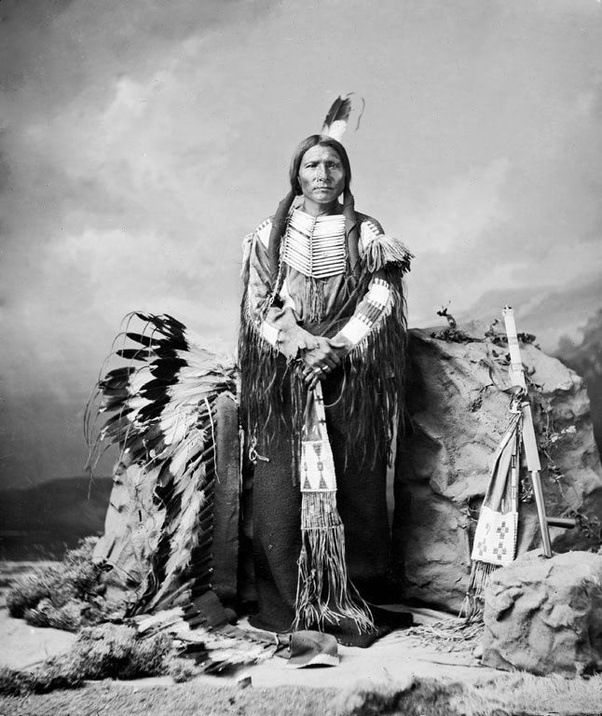
Photo: https://www.rudolfdethu.com/ 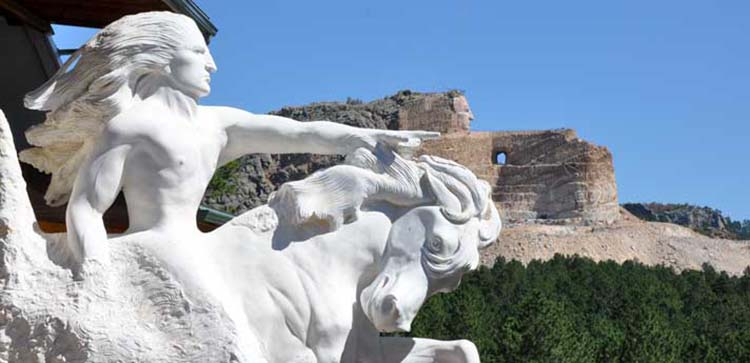
Photo: http://indians.org/ -
Black Buffalo Woman was his first love. They first met in 1857, but while Crazy Horse was on a raid, she wed a man named No Water.
While No Water was out with a hunting party in 1868, Crazy Horse continued to show her attention and eloped with her. When her husband found out, he pursued the couple and made an effort to shoot Crazy Horse. Thankfully, Crazy Horse's close friend Touch the Clouds knocked the gun up just before the man fired the trigger. The misfired bullet struck Crazy Horse in the jaw as opposed to the chest.
The two leaders reached a truce despite worries that villages may fight one another. Crazy Horse demanded that Black Buffalo Woman not be punished for running away, and No Water gave him a horse as payment for the harm. A light-skinned baby girl born to Black Buffalo Woman's fourth pregnancy was thought to be the product of her encounter with Crazy Horse.
After Crazy Horse was shot, Black Shawl was dispatched to aid in his recovery. Crazy Horse fell in love once more. They got married and had a daughter, who passed away at the age of two.
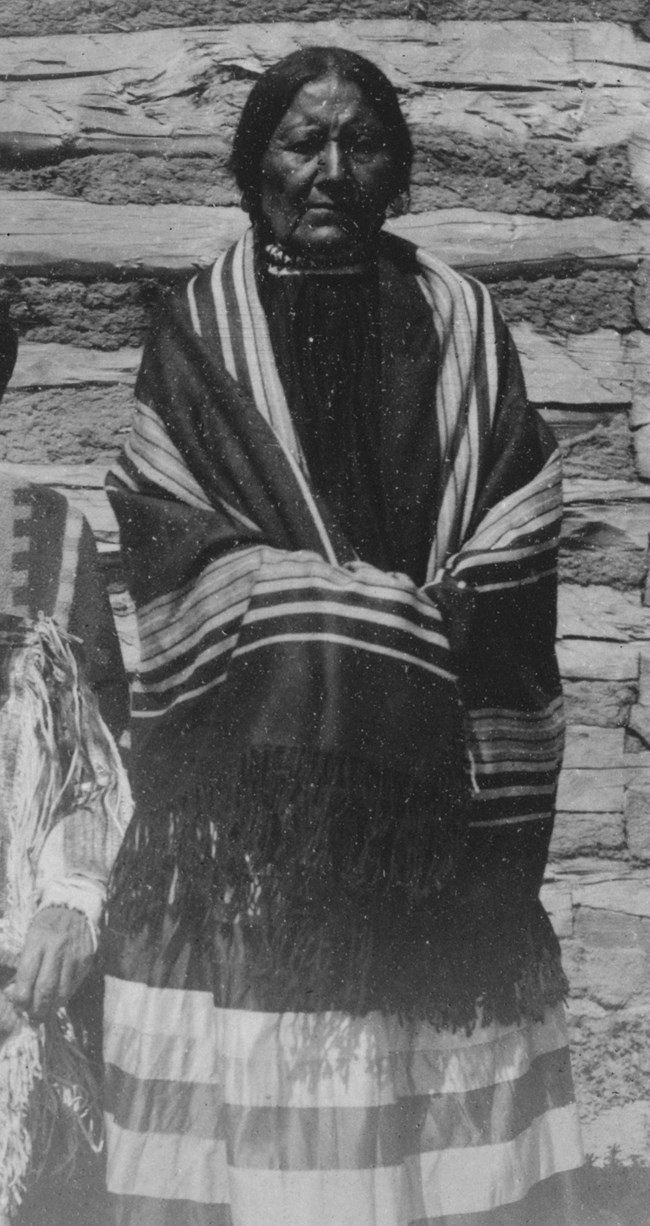
Black Buffalo Woman - Photo: https://www.nps.gov/ 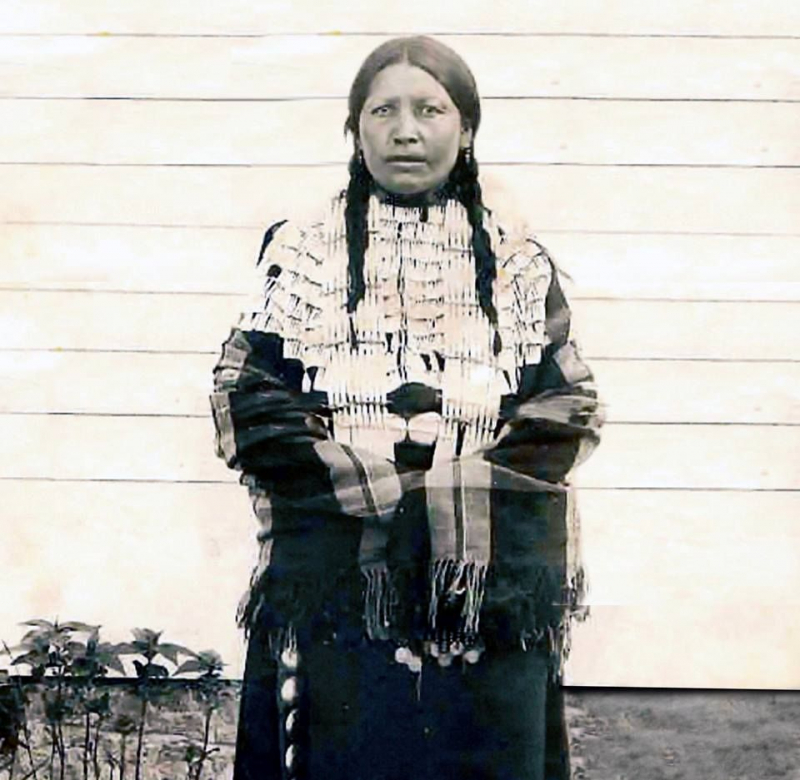
Black Shawl - Photo: https://www.pinterest.com/ -
The plains tribes' young men frequently sought visions, which were kind of like directions for achieving one's destiny. Crazy Horse disregarded many of the Sioux rites and traditions because he was not a stickler for his tribe's traditions.
Crazy Horse purposely disregarded the prescribed ceremonies and rode off into the grasslands in 1854 in search of a vision. After going without food for four days, Crazy Horse saw an unadorned horseman who told him to dress similarly, wearing no more than one feather and never a war hat.
To avoid harm, he was also instructed to throw dust over his horse before engaging in combat, to place a stone behind his ear, and never take war spoils. With just one exception, Crazy Horse is claimed to have obeyed the rules for the rest of his life and to have never been hurt during the conflicts that followed.
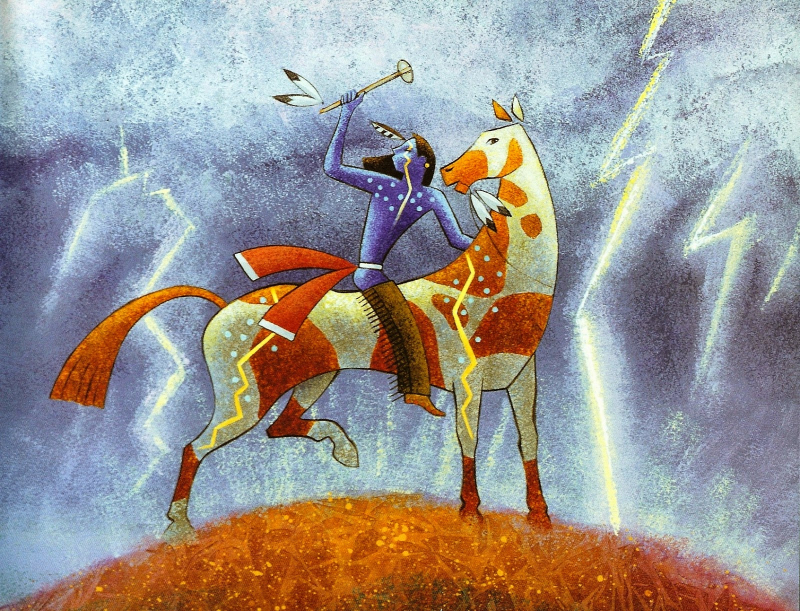
Photo: https://thewildreed.blogspot.com/ 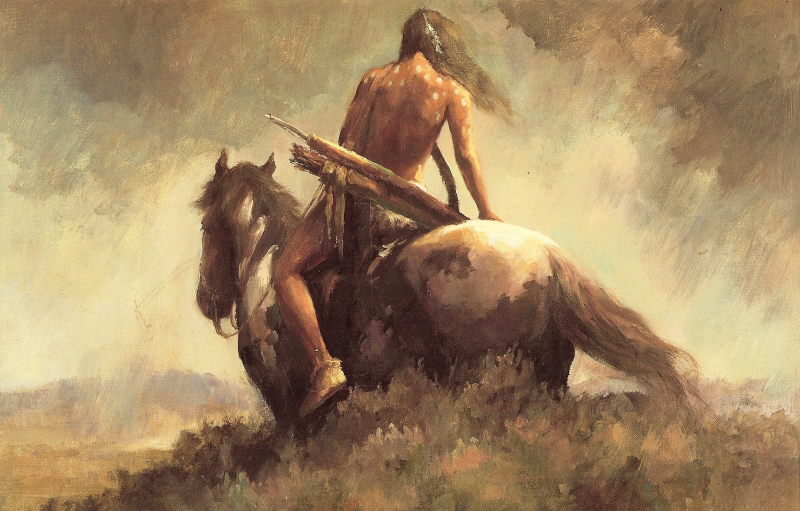
Photo: https://thewildreed.blogspot.com/ -
Due to its gold-hungry nature, the U.S. government breached many of the treaties it made with Native Americans. John Bozeman, an adventurer, forged a path through Sioux, Cheyenne, and Arapahoe territory in 1863 to reach Montana's gold riches, which were forbidden to white people by an 1851 treaty. Tension increased. More than 200 peaceful Cheyenne were killed by Colorado militiamen in 1864, the bulk of whom were women and children. In the years that followed, Native American tribes started pursuing retribution from white soldiers who broke treaties.
About 80 troops from Wyoming's Fort Phil Kearny, a sizable garrison established to safeguard white emigrants and gold seekers, were commanded by Captain William Fetterman on December 21, 1866. Along their path, Crazy Horse placed ruses. Following, Fetterman's troops charged 1,000 warriors who were hiding and grabbed them. The American soldiers were all slain. The Lakota referred to it as the Battle of the Hundred-in-the-Hands; the Americans termed it the Fetterman Massacre.
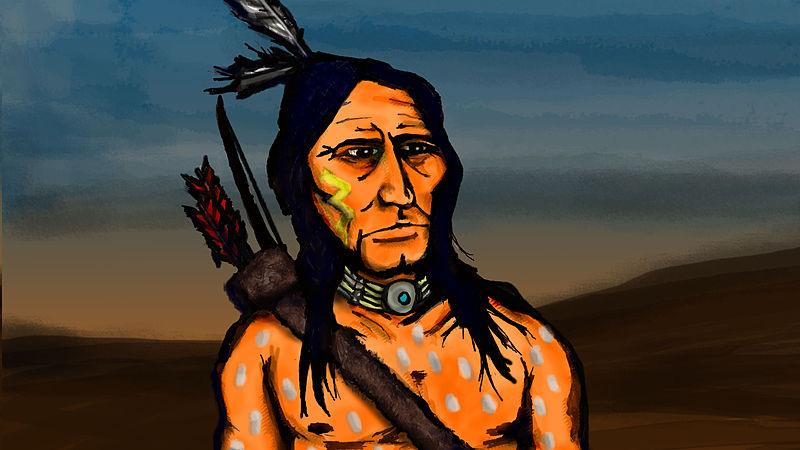
Photo: https://www.discoverwalks.com/ 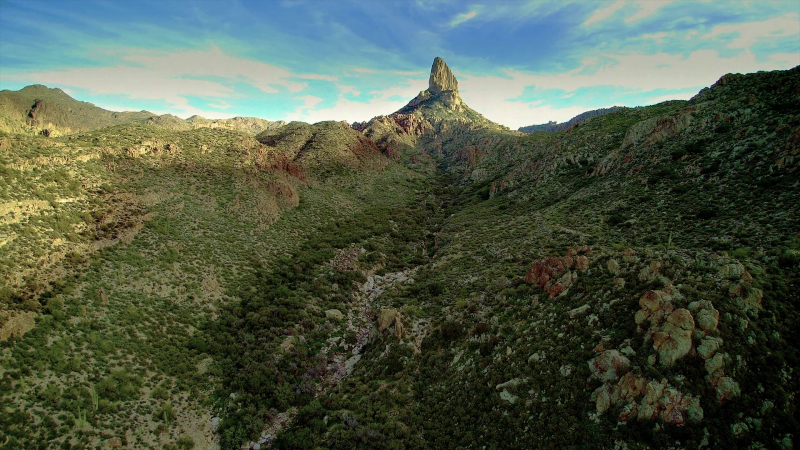
Lust for gold - Photo: https://www.imdb.com/ -
The Black Hills in South Dakota were declared to belong to the Sioux by the 1868 Treaty of Fort Laramie, but only six years after it was signed, the agreement was broken because gold had been found there.
Native Americans and soldiers' relations deteriorated as the railroads moved farther west. Crazy Horse and Sitting Bull participated in a raid against 400 soldiers in 1872, and after making a careless sprint to meet the American Army, Crazy Horse's horse was shot out from beneath him.
General George Armstrong Custer entered Sioux country in 1873. Crazy Horse first saw Custer when he came across a group of sleeping soldiers somewhere along the Yellowstone River. When a fight, Crazy Horse retreated after the Sioux attempted to steal their horses but were unsuccessful.
General George Armstrong Custer was sent by the government to conduct a surveying team there in 1874. In violation of treaties, Custer's army entered the Black Hills in pursuit of gold, bringing with them civilian miners who outnumbered the Native population. The government moved the Sioux onto smaller reserves when they refused to relinquish their lands, but the Native Americans resisted. These incidents would trigger Crazy Horse's most important conflicts.
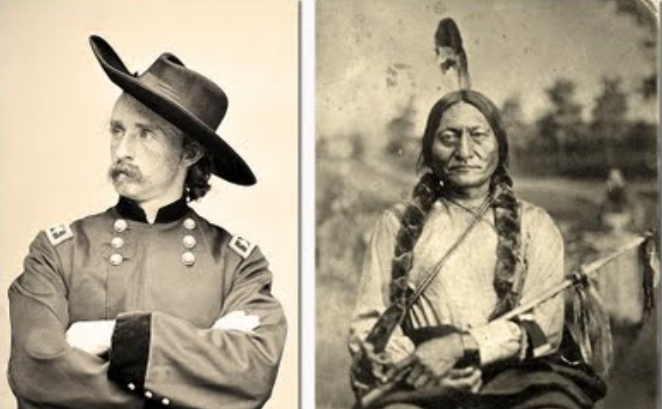
Photo: http://www.whitewolfpack.com/ 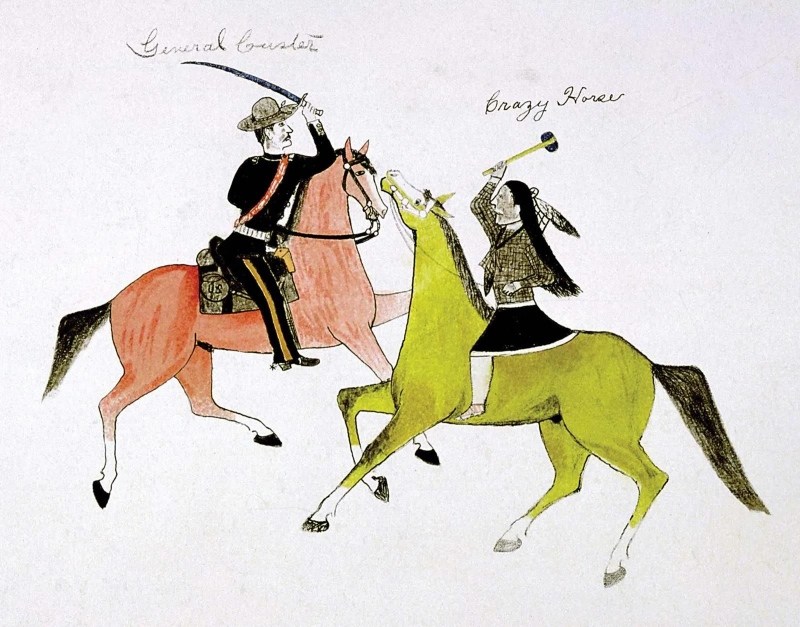
Photo: https://www.britannica.com/ -
One of the most interesting facts about Crazy Horse is he was an excellent military strategist and resistance leader. The American Department of War ordered the Lakota to live on reservations in 1876. Mad Horse declined. As an alternative, he commanded 1500 Lakota and Cheyenne warriors in a conflict with Brigadier General George Crook's forces, who were attempting to reach Hunkpapa Lakota chief Sitting Bull's camp at Little Bighorn. Crazy Horse won the engagement strategically, routing Crook's army and depriving George Custer's Seventh Cavalry of much-needed reinforcements. The outcome of the Battle of the Little Bighorn, which came next, would have been different if Crazy Horse had failed.
General Custer ignored the advice of his Native guides, who told him he would lose the engagement, and engaged in battle at Little Big Horn one week later. At the Battle of the Little Big Horn, better known as Custer's Last Stand, Crazy Horse led up to 1,000 warriors to flank Custer's troops, ensuring the general's terrible defeat and death.
Crazy Horse was "the bravest man I ever saw," according to an Arapaho warrior by the name of Water Man. " He shouted orders to his warriors as he rode closest to the soldiers. He was being shot at by every soldier, but he was never struck." Another Native American soldier remarked that Crazy Horse was the battle's best combatant.
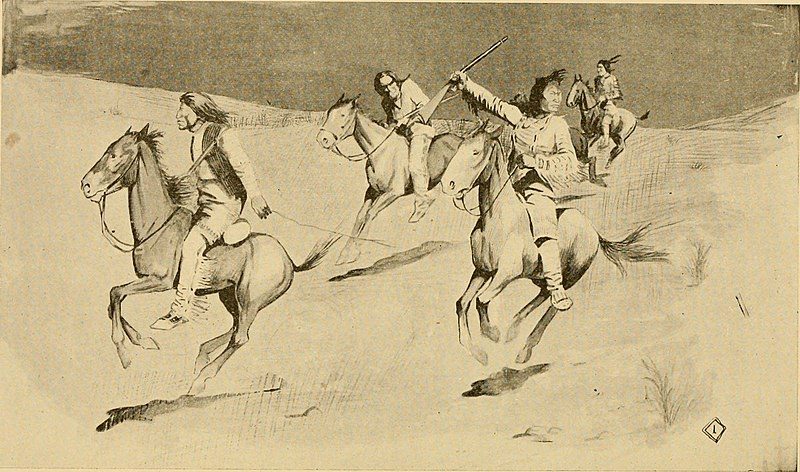
Photo: https://www.discoverwalks.com/ 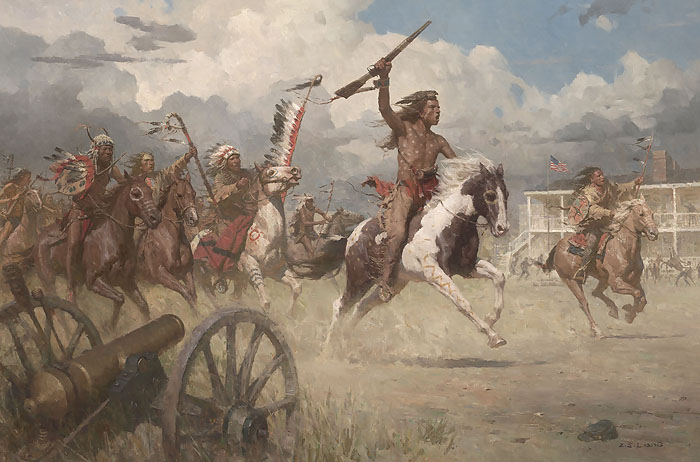
Photo: https://www.picturethisgallery.com/ -
Sitting Bull and Gall, two of the battle's key figures, departed for Canada after the Battle of the Little Bighorn. Crazy Horse stayed in the United States. It was a choice that altered his life. While the Sioux faced ongoing hostilities from General Crook during a terrible winter that nearly wiped off the tribe, Crazy Horse proceeded to Big Butte to harass white miners in the Black Hills.
Colonel Nelson A. Miles chased him as part of a stepped-up army operation to compel all Native Americans to visit the government offices. Colonel Nelson A. Miles attempted to make a deal with Crazy Horse after recognizing the tribe's struggle for existence and pledging to assist the Sioux and treat them decently.
Soldiers shot and killed numerous messengers whom Crazy Horse dispatched to negotiate the bargain as Crazy Horse escaped. Until the onset of winter, Miles attacked Crazy Horse's camp frequently.
As a result of the winter's incapacities, Crazy Horse bargained with Lieutenant Philo Clark, who gave the starving Sioux their reservation in exchange for their submission. The two sides agreed.
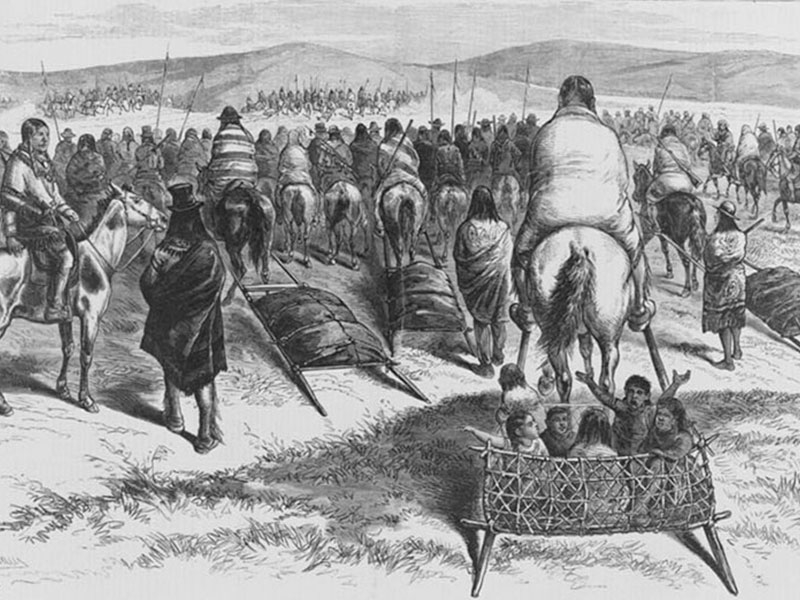
Crazy Horse and his people on their way from Camp Sheridan to surrender to General Crook at Red Cloud Agency - Photo: https://landmarkevents.org/ 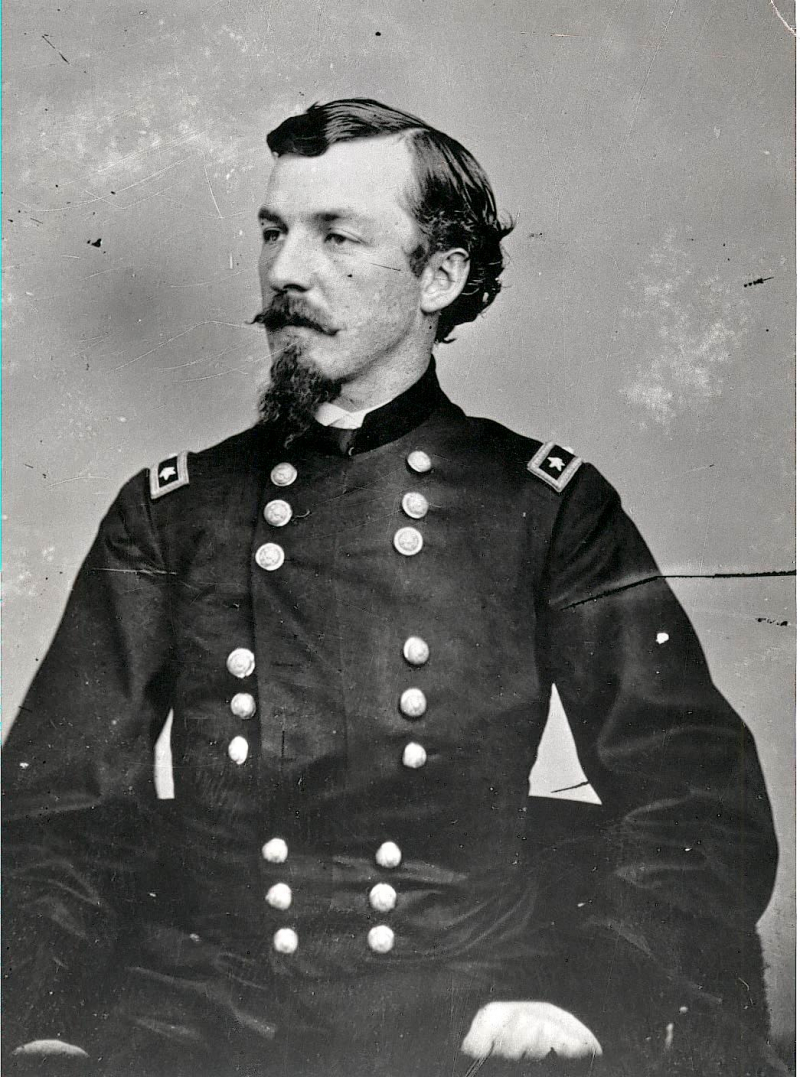
Colonel Nelson A. Miles - Photo: https://www.kshs.org/ -
Crazy Horse ran into issues during negotiations with both the Army and his other tribesmen. Crazy Horse resisted Clark's attempts to persuade him to travel to Washington, which strengthened the Army's view that he was too unpredictable for negotiations.
Following a rumor that Crazy Horse had gained favor with white people and that they intended to appoint him as the leader of all Sioux, several Sioux became agitated with one another.
As the Army sought Crazy Horse's assistance in their struggle with the Nez Perce people, tensions grew. Untrue to what Crazy Horse had said, an interpreter during these meetings asserted that Crazy Horse had made a vow to continue fighting until all white men were dead.
To combat the Nez Perce warriors, several Sioux warriors enlisted in the Army. Crazy Horse became angry and threatened to leave the negotiations. He was then promptly detained.
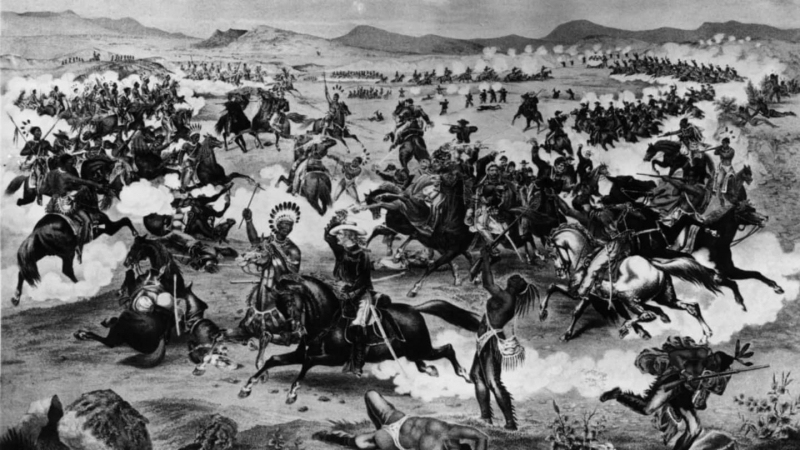
Photo: https://www.mentalfloss.com/ 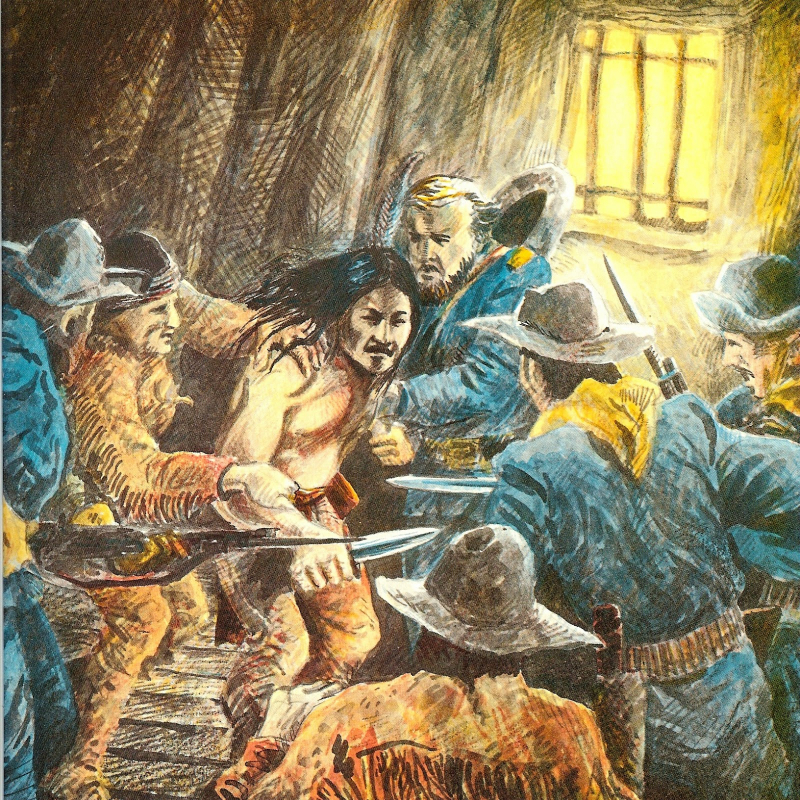
Photo: https://thewildreed.blogspot.com/ -
Crazy Horse departed the reserve without permission in September 1877. He attempted to take his sickly wife to her parents. General Crook issued a warrant for his arrest out of concern that the warrior may rejoin the fray.
When Crazy Horse returned to camp the following day, he asked to speak with military officials but was instead directed to a cell. Crazy Horse battled as he became aware of the betrayal. Little Big Man, an old acquaintance who was employed by the Army as a policeman, made an effort to subdue Crazy Horse when the latter brandished a concealed dagger at him.
A soldier thrust a bayonet into Crazy Horse's abdomen, piercing his kidneys, to stop him from stabbing Little Big Man. After collapsing, Crazy Horse was taken to an office but declined to use the cot there. Only his father was permitted to go there.
Even as he lay dying, Crazy Horse insisted against lying on the white man's bed. He demanded to be put on the ground.
Soldiers with guns watched as he passed away. At some point later that evening, on September 5, 1877, 35-year-old Crazy Horse passed away in Fort Robinson, Nebraska, while resting on the ground. His remains were removed by Sioux and interred at an unidentified site close to Wounded Knee Creek.
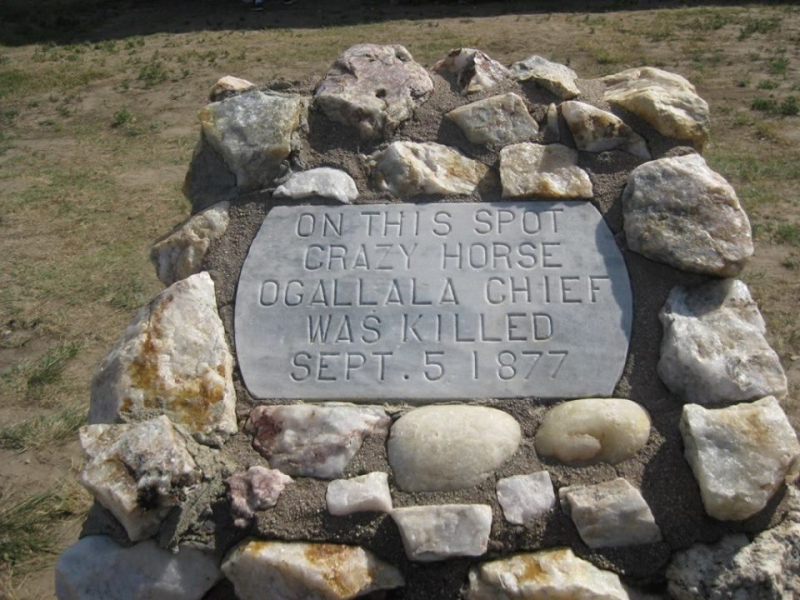
Photo: https://www.pinterest.com/ 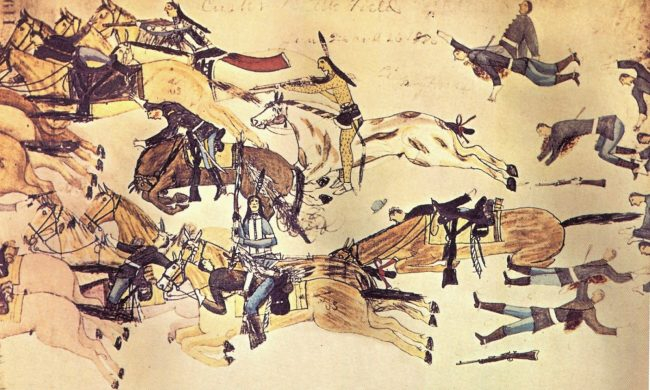
Photo: https://www.zinnedproject.org/ -
The Oglala Lakota chief Henry Standing Bear gave the Crazy Horse Memorial a commission in the late 1930s as a retort to Mount Rushmore, and it has been under construction since 1948.
Without any help from the US federal government, only private donations are used to pay for the memorial. There is currently no set deadline for completion; nevertheless, Crazy Horse's face was finished and dedicated in 1998. The Crazy Horse Memorial Foundation frequently assumes leadership roles in cultural, social, and educational activities, such as the Volksmarch, which is the only time the general public is permitted access to the monument grounds. With more than a million visitors a year, the foundation gets the majority of its funding from tourist fees. The monument etched into Thunderhead Mountain in South Dakota will be around 563 feet tall when it is finished.
Controversy has surrounded the memorial. The Crazy Horse statue is intended to honor the spirit of the late Crazy Horse and all Native Americans, according to Ziókowski, the man who built the Crazy Horse Memorial. It is commonly known that Crazy Horse preferred not to have his picture taken while he was alive and that he is believed to be interred in an obscure place. Many Native Americans still disagree with the memorial's intended purpose, notwithstanding Henry Standing Bear of the Lakota tribe's belief in the sincerity of the intentions. The monument has been compared by its detractors to the degradation and desecration of Crazy Horse's ideas as well as the Black Hills' ecosystem and geography.
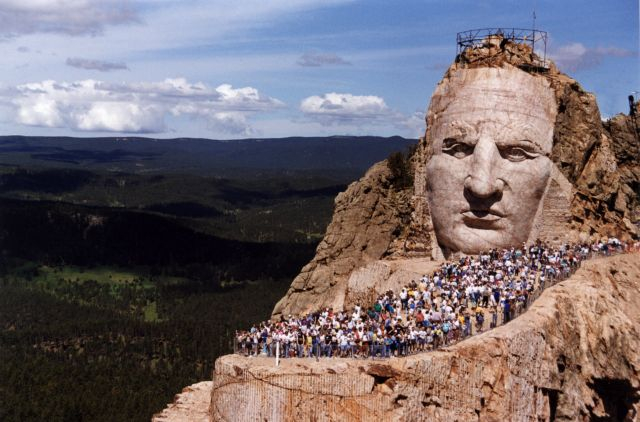
Photo: https://caep.org/ 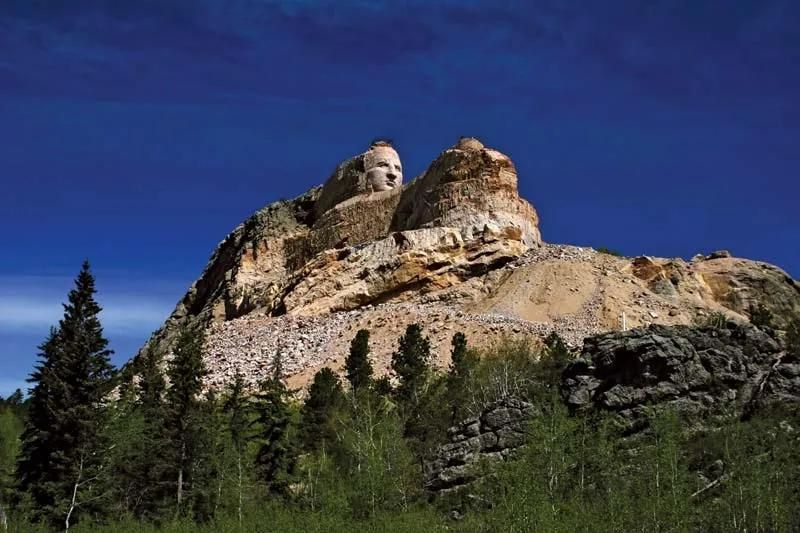
Photo: https://www.britannica.com/































